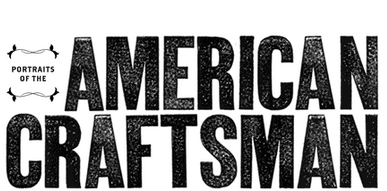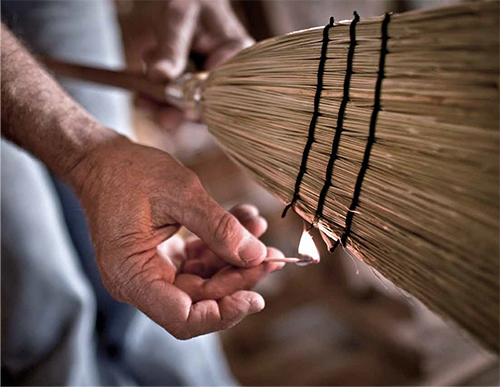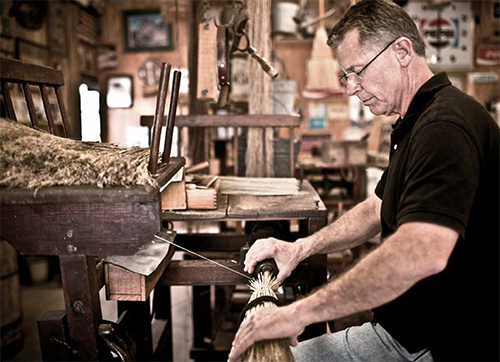Henson Broom Shop: you’ll always have a job.
Richard Henson remembers well the last words his grandfather spoke to him. It was Thanksgiving 1981, a few days before Rollie “Bootsie” Henson would pass. Rollie had opened a broom-making business during the Great Depression, and he and Richard’s father had been making brooms ever since.
Richard had taken a different route with his life. He was a principal and basketball coach nearby, a former athlete and educator not interested in taking over the family business. Then his grandfather spoke those final words to him. “He simply told me, ‘If you were to learn how to make a broom, you’ll always have a job,’” Richard Henson says. “And I knew that’s what I needed to do.”
Seven years later Richard Henson took over the family business, and today he makes brooms every day, often in front of admiring tourists who step off the buses that make stops at Henson Broom Shop and General Store—folks who come to see one of the last master broom craftsmen at work.
Henson says that as soon as he stitched his first broomcorn, “I instantly knew this was for me. I had the hands for it, the skill and imagination that’s needed. And being a coach and an athlete, I had the competitive zeal to excel. I knew exactly that this was my calling.”
Henson still uses the tools his grandfather used more than eight decades ago. Although he makes twelve types of brooms, the process is similar on most of them. First he gets his broomcorn “in order.” (Broomcorn is a tough annual grass in the sorghum family; the part that you see on a broom is the long, fibrous panicle of the plant.) “In order” means he dampens it slightly by taking a bunch in his hand like spaghetti, dipping it in a barrel of water, and letting it drip partially dry.
Assuming someone wants the broomcorn to remain “natural” in color (Henson also can dye it black or brown), he begins attaching it to the handle—which itself is stuck in a vise so that it’s parallel to the ground and easy to work on. He sticks a wire through the hole at the handle’s lower end, ties it on, and proceeds to stitch, sew, and tie the broomcorn as needed.
The handle is either pre-cut, or—if someone has ordered a twisted handle, like the ones Henson used to make for the TV show Dr. Quinn, Medicine Woman—Henson has already cut, shaved, sanded, and finished the handle to its final knotty look. The entire process takes between fifteen and forty-five minutes, about the time it takes for a tourist to finish a Moon Pie, a bag of peanuts, and an RC cola from the general store next door.
“We have a lot of folks who come from all over the world to see our brooms,” Henson says. “They’ve seen me on TV or in magazines, or talking about it onstage. They see the joy I’ve found in the work. They don’t see the hard work and sacrifice behind it. But that’s okay. They still get a great broom.”





